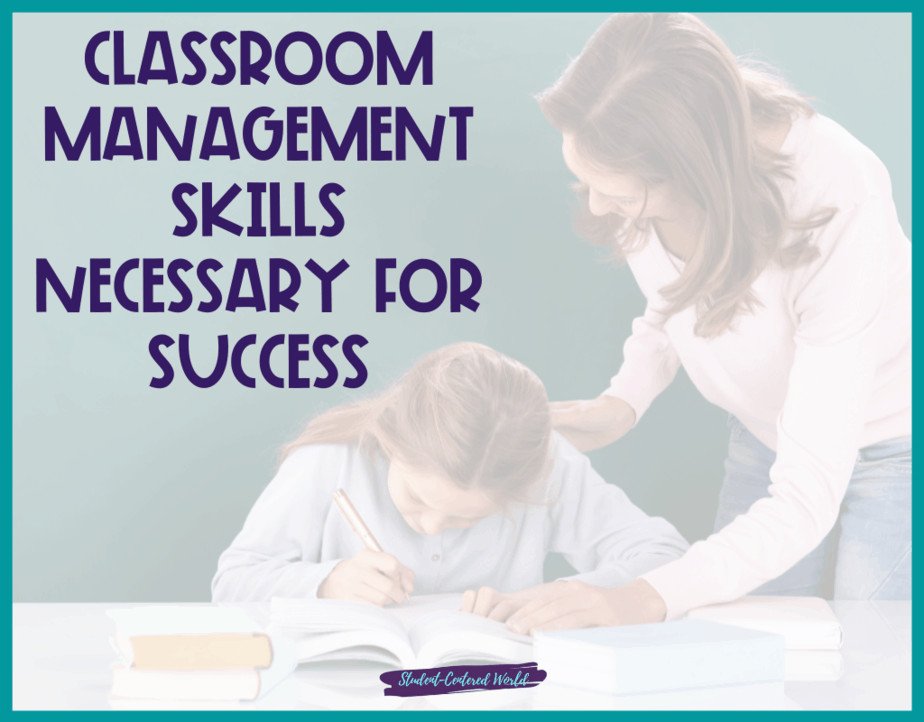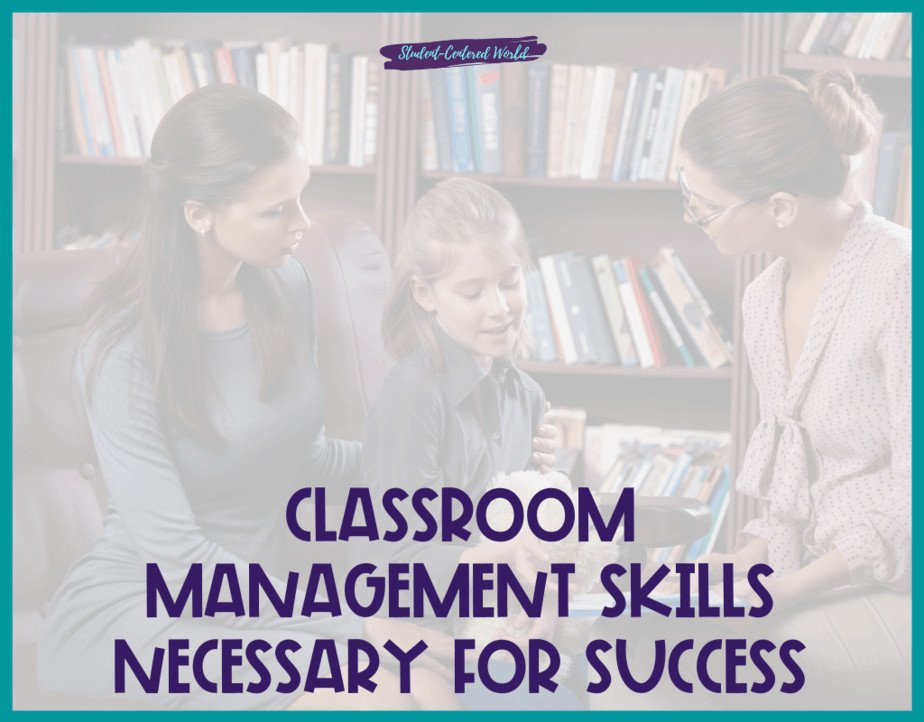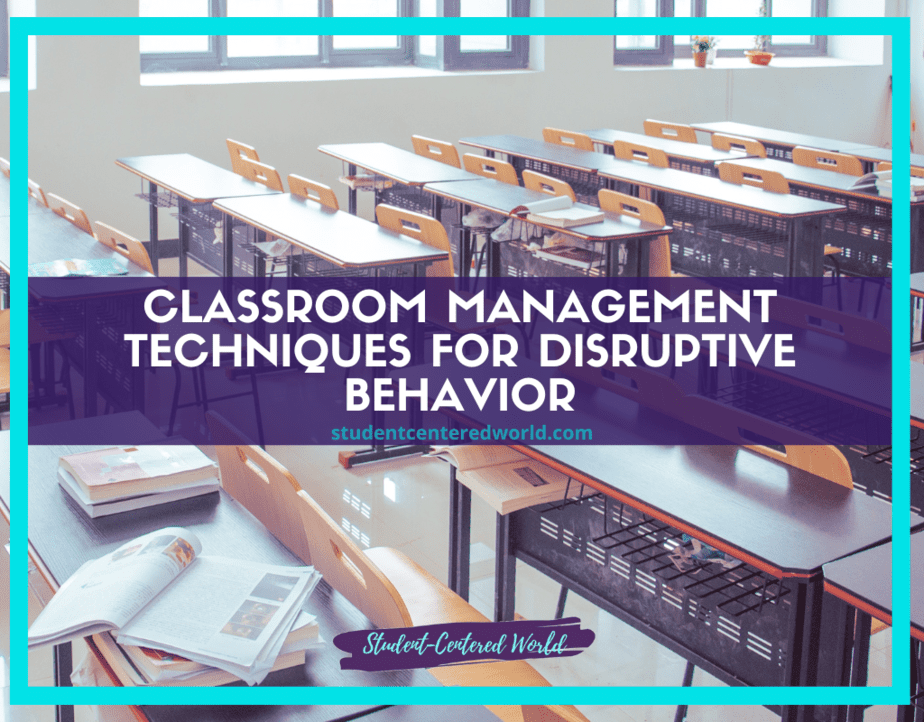Effective Classroom Management Skills Necessary for Success
Click above to listen to podcast episode 58: “Classroom Management Skills Necessary for Success“
A simple Google search for “classroom management skills” reveals a landscape that is not only plentiful but overwhelmingly complex. For educators at any grade level, from high school to the purview of university teachers, the quest to find a system that seamlessly incorporates student behavior, engagement, and reduced teacher stress can feel like one of the biggest challenges in the profession.
So many teachers, at some point, find themselves wondering, “Why do my strategies fail with these specific student behaviors?” The answer often lies not in the strategy itself, but in the foundation upon which it is built. Effective classroom management is not a collection of tricks; it is a coherent system rooted in the classroom culture you create from the moment the bell rings on the first day of class.
The Pyramid of Management: Why Structure Comes Before Strategy
Before you can implement sophisticated classroom management strategy techniques, you must first establish a classroom environment that will support them. Imagine your classroom as a pyramid. The broad, supportive base is the foundation, and the specific routines and interventions are the pinnacle.

This foundation is poured on the first day of class and consists of clear expectations, established rules, and foundational procedures. An effective teacher understands that these structures are the teaching tools that support all subsequent classroom management strategies. If your management plan is failing, it is likely because you attempted to build the top of the pyramid without securing the base.
The classroom structure dictates and supports the classroom management strategy. Your responsibility is to create structures that support your management goals while efficiently accomplishing curriculum targets.
If you have a classroom management strategy without a classroom culture to support it, you will inevitably face persistent classroom management issues. The strategies that work are those that can be easily managed and reinforced by the predictable structures of the classroom.
The Three Reflective Questions for Every Educator
Students are diverse, and your classroom management skills must reflect that. To build a system that works for your entire class, start by asking yourself these three foundational questions.
1. What does my ideal, effective classroom look and sound like?
This question forces you to visualize the effective environment you wish to create. There are four key indicators of a functioning classroom:
- Student learning is visible through active engagement and involvement.
- Classroom management is evident, and student behavior is predominantly positive.
- The classroom is organized, structured, and efficient.
- Classroom instruction is differentiated to meet the needs of all learners.
In this environment, a positive tone is palpable. You might see students engaged in thoughtful group work, discussing materials, and collaborating on solutions. You’ll hear productive student comments and questions. This vibrant peer interaction is not chaotic; it is channeled through the classroom structures, keeping the environment both dynamic and orderly. Here, instruction adapts to individual learning styles. Some students may need more time, while others require compacted assignments.
These adjustments are not afterthoughts; they are integral parts of the classroom management strategy, ensuring that all students can access student learning and reducing the likelihood of off-task behavior.
2. How do I know when all students are genuinely engaged in their work?
This question addresses the core of instructional monitoring. We cannot know who needs help without first mastering the art of classroom awareness. Classroom management is the art of creating an environment where every student’s needs are met while maximizing student learning.

This involves ensuring classroom safety, maintaining the physical space, and fostering engagement. It seems impossible, however, when multiple students exhibit symptoms of disengagement:
- Wandering eyes and off-task behavior during independent work or group work.
- Poor eye contact with the teacher or instructional materials.
- Disruptive behaviors, such as loud talking, distract the entire class.
- A lack of participation in essential learning activities, such as note-taking or contributing to discussions.
An effective teacher knows that engagement cannot be mandated; it must be engineered through classroom management skills. This begins with strong relationships and consistent interaction. The teacher has the responsibility to get students working, keep them working, and help resolve problems. These all require mastered classroom management skills. It is a common struggle, but a vital one; a classroom cannot be productive until the teacher knows how to get the entire class focused and on task.
3. What classroom activities cause the most struggle for my students?
Pinpointing friction points is essential for refinement. These struggles often revolve around four key areas:
- Clarity of classroom rules and procedures.
- Consistency of classroom discipline.
- Alignment of instructional techniques with student needs.
- The level of classroom anxiety and the presence of stress-reduction strategies.
An effective teacher assesses these components with an eye toward creating a more positive and conducive learning environment. For instance, a disruptive student is often a symptom of a larger issue. Is the group work structured poorly? Are the instructions unclear? Positive change comes from making rules more student-friendly, establishing a discipline system that is fair and predictable, using positive techniques to restrain negative behaviors, and explicitly teaching stress-relief strategies.
These teaching tools are not secret, but they must be continuously monitored, taught, and modified by the teacher as they gain experience and their students change.
Developing and Honing Your Classroom Management Skills
The effective teacher strikes a delicate balance between control and encouragement to facilitate student growth. This balance is achieved through classroom leadership. The teacher must maintain a climate where students are encouraged to be deeply engaged in learning, not just compliantly completing assignments.

First impressions are critical. The tone set on the first day of class reverberates throughout the year. From that moment, the teacher’s own behaviors model the expected classroom culture. They model how to collaborate in group work, how to handle frustration, and how to engage in scholarly peer interaction.
Learning classroom management skills requires an understanding of both classroom dynamics and specific strategies. The following list outlines key skills every educator should develop, from high school to elementary levels:
- Maintaining an Orderly Environment:
This begins the moment the bell rings. An effective teacher uses proactive classroom management skills to create a predictable, safe space where learning is the priority. This includes having a plan for common classroom management issues, such as how to redirect a disruptive student without halting instruction for the entire class. - Setting Clear Expectations with a Positive Tone:
From the first class, university teachers and K-12 educators alike must communicate clear expectations for work, student behavior, and peer interaction. This is not done through intimidation, but through clear, positive explanation and practice. - Developing a Responsive Curriculum:
The curriculum itself is a teaching tool. It should be based on student needs and learning objectives, incorporating varied methods like group work and independent study to maintain engagement and cater to different learners. - Monitoring Behavior and Attitudes:
An effective teacher is constantly taking the pulse of the room. They monitor off-task behavior, the quality of student comments, and the overall academic and emotional temperature of the class. - Demonstrating Commitment through Consistency:
Students trust a teacher who is consistent. Consistent interaction and enforcement of rules build strong relationships based on fairness and respect. - Modeling Desired Behaviors:
The teacher’s own behaviors are the most powerful teaching tool. Modeling how to handle stress, how to collaborate, and how to learn from failure teaches more than any lecture. - Integrating Management with Learning:
Weave classroom management skills directly into your lesson objectives. Teach collaboration as explicitly as you teach content. - Creating Celebrations of Success:
Build a classroom culture that celebrates growth. Acknowledge both individual and group successes to motivate students toward their goals.
A Journey of Consistent Interaction
Ultimately, effective classroom management is not a destination but a continuous journey of reflection, adaptation, and growth. It begins with the first impressions you make and is sustained through daily, consistent interaction. By focusing on building strong relationships, establishing a supportive classroom culture, and refining your classroom management skills, you transform your classroom from a place of potential conflict into an effective environment where every student feels safe, valued, and ready to learn.
The biggest challenges become manageable, not through a single magic bullet, but through the deliberate, thoughtful construction of a classroom where both students and teachers can thrive.
This article was originally published on July 16, 2021.





